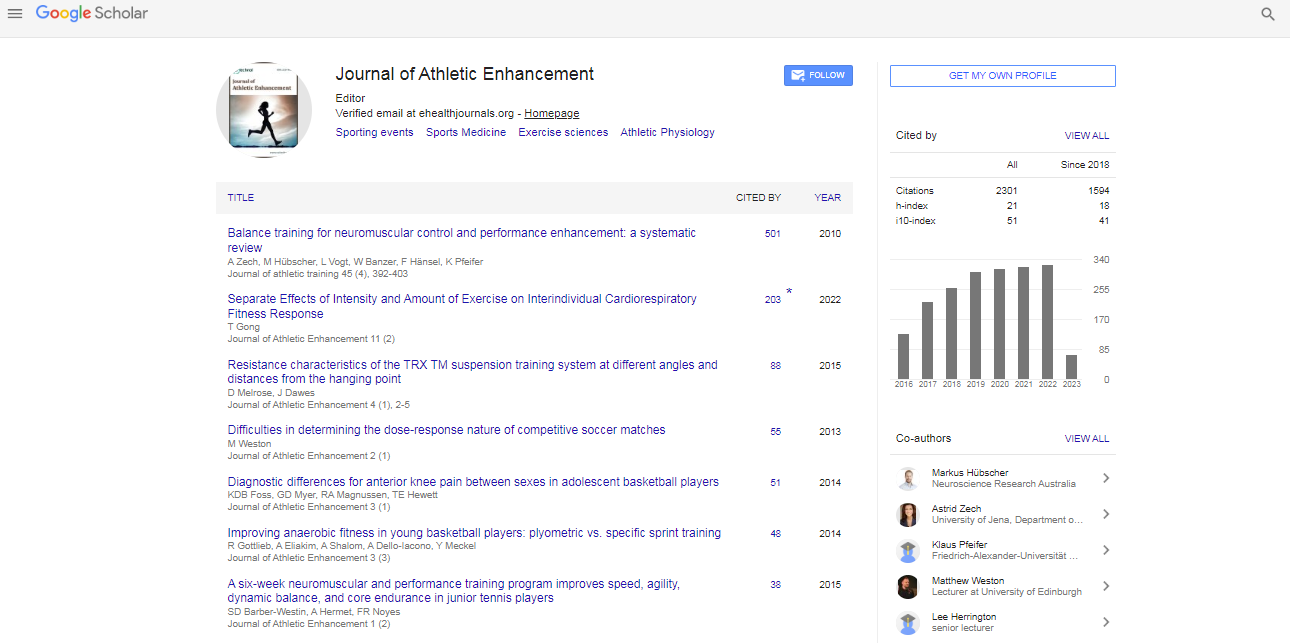Research Article, J Athl Enhanc Vol: 8 Issue: 4
Influence of a Modified Step Frequency on Energy Cost of Running after a Downhill Run in Non-Expert Subjects
- *Corresponding Authors:
- Pascal Balducci
Laboratoire Interuniversitaire de Biologie de la Motricité,
EA 7424 UFR STAPS,
27-29 Boulevard du 11 novembre 1918 F-69622 Villeurbanne Cedex,
France Tel: +33675837567
Fax: +33472432846
E-Mail: balduccip@wanadoo.fr
Received: April 01, 2019 Accepted:May 09, 2019 Published: May 27, 2019
Citation: Balducci P, Clémençon M, Monteil K, Blache Y, Trama R (2019) Influence of a Modified Step Frequency on Energy Cost of Running after a Downhill Run in Non-Expert Subjects. J Athl Enhanc 8:2.
Abstract
Purpose: The purpose of this study was to examine the role of step frequency (SF) on energy cost of running (Cr) after a downhill run (DHR) of 7.5 km (-6.7% grade) run at about 80% of heart rate reserve.
Method: Pre- and post-DHR, force, stiffness and Cr at 70% of velocity at 2 V O • max were measured in twelve participants unaccustomed to mountain running. Post-DHR data were recorded at a freely chosen SF and at the pre-DHR SF.
Results: A DHR induced reductions in the knee extensors force (-15.7%, P<0.001) and leg stiffness (-3.2%, P<0.05), an increase in blood lactate concentration, a significant increase in creatine kinase activity and muscle soreness. The post-DHR freely chosen SF increased (p<0.001) whereas Cr remained unchanged. Running at the pre-DHR SF induced an increase in the energy cost of running (+6.4%, p<0.05). A positive correlation (r=0.62, p<0.05) was observed between SF variations (pre to post at freely chosen SF) and Cr variations between the two post conditions.
Conclusion: DHR-induced fatigue resulted in the selection of a new preferred SF limiting the rise in energy cost. SF seems to be unconsciously but efficiently adapted to the altered muscular force and stiffness after DHR.

